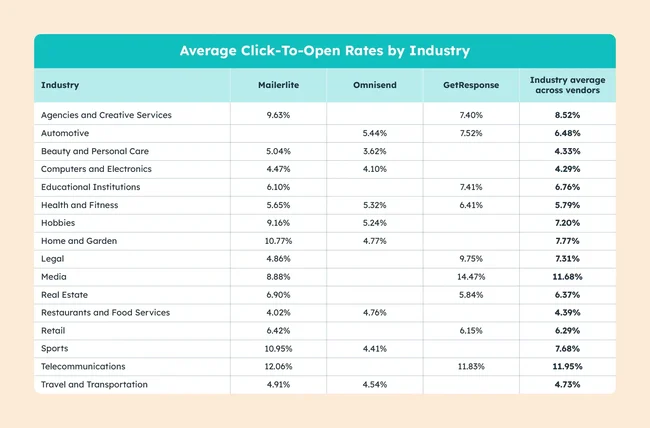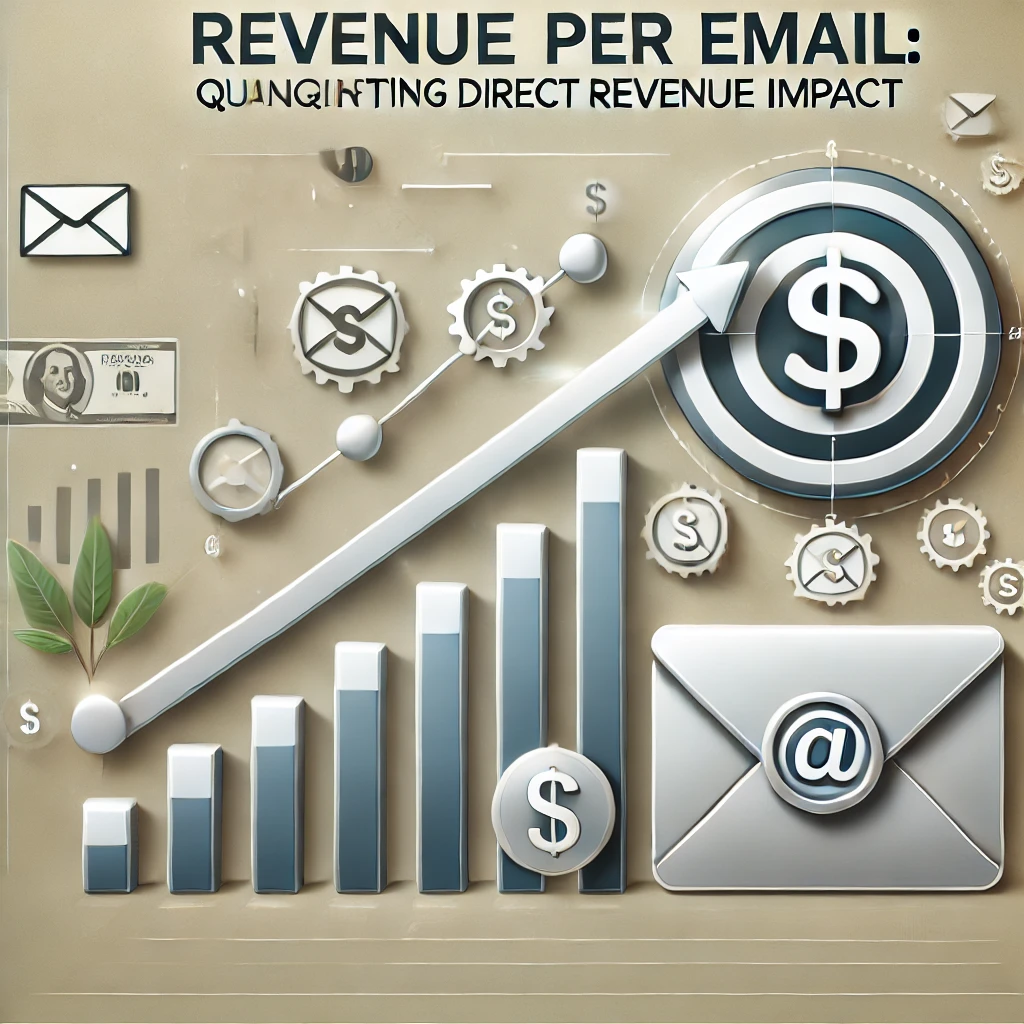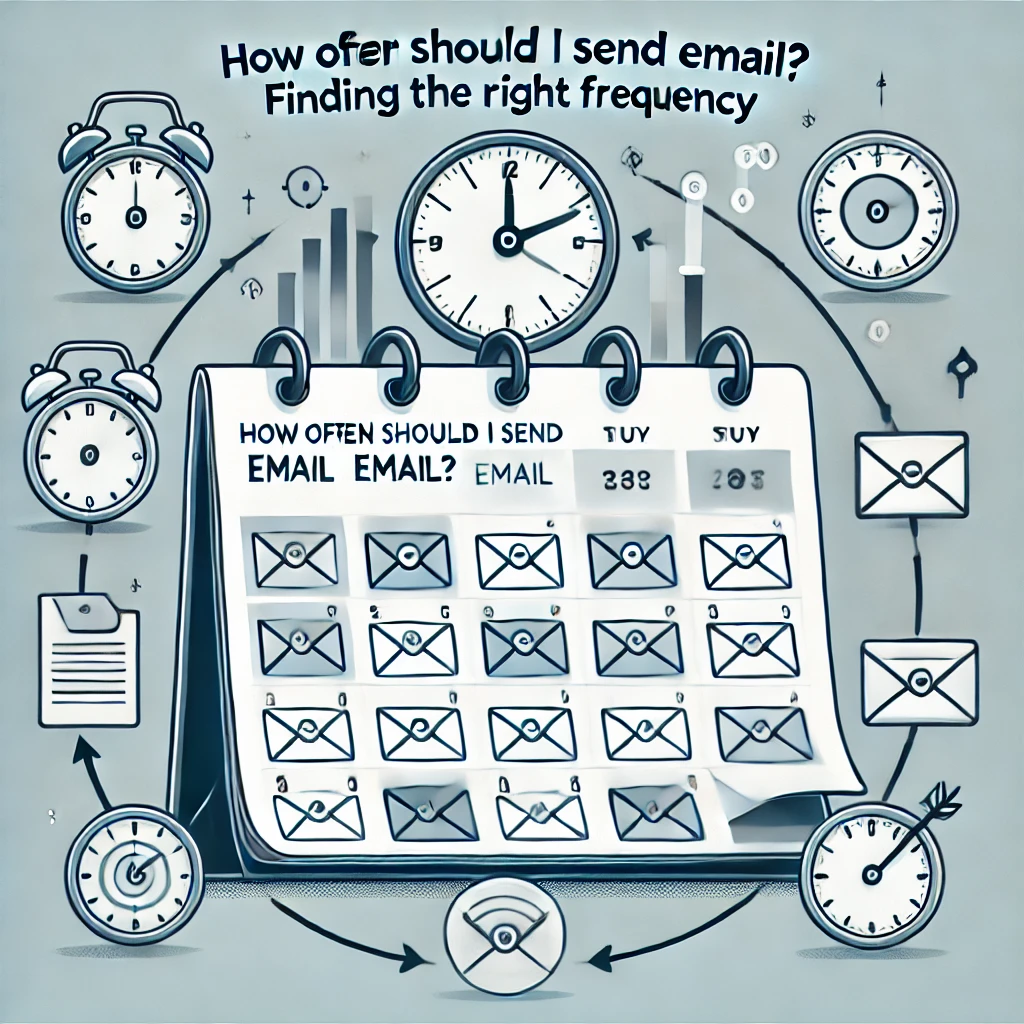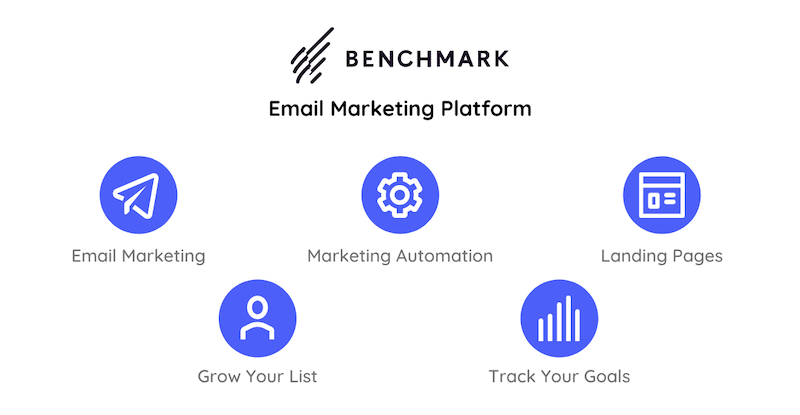Why Email Grips Custome Only Works in October 2023 (And 99++’) It doesn’t matter if you’re only just starting to tap into email marketing, or you’ve been in the game a while — tracking performance is what email marketing is all about! That’s where email marketing benchmarks help. All these metrics allow you to gauge the effectiveness of your campaigns and identify action steps to optimize them.
The guide will walk you through how to set and track your email marketing benchmarks. You can measure success, identify areas for improvement, and optimize your email marketing strategy by doing so.
What Are Email Marketing Benchmarks?
Email marketing benchmarks are data-backed metrics used to measure how well your email campaigns are performing. These benchmarks give you a clear direction of whether your campaigns are driving results — better open rates, boosted CTR, and positive ROI, etc.
They are reference points; think of benchmarks. They reflect where you were at one point in time and measure progress in subsequent sessions. So, that will help you to know where to improve and optimize your overall email marketing strategy to fit your long-term business objectives.
What are the email marketing benchmarks?
As a business owner or marketer, knowing email marketing benchmarks is extremely important. Without benchmarks, there would be no clear reference point for analyzing how well your campaigns are doing. This is why benchmarks are so important.
Measure Progress: Benchmarks allow you to see how you are doing relative to previous data. Say, for instance, your open rate has plateaued at 15% for three months — it’s time to pin down what’s working (and what isn’t).
Streamline Your Approach: You can use key metrics to get insight into areas that can be improved. If you find you’re not getting a lot of clicks, for example, it may mean that your calls-to-action (CTAs) need to more compelling.
Maximize Return On Investment (ROI): The ROI of email marketing is comforting with reports showing that Businesses earn an average $36 for every $1 spent. Creating benchmarks enables you to monitor this ROI and pivot your plans to maximize profits.
Informed Decision Making: Accurate benchmarks allow you to strategize on future campaigns. Instead of winging it, you will have hard data to guide your efforts.
How to Set SMART Goals for Email Marketing
Prior to jumping into email marketing benchmarks, it’s important to set SMART goals. SMART stands for:
• Specific: Your goal should be well-defined. Instead of saying, “I want more clicks,” get specific like “Increase the CTR by 5% in the next quarter.”
• Measurement: Your goal must have a measurement. Such details would come in the form of numbers like “Increase open rates to 20%.”
• Attainable: You need to make your goals possible. If you have a 5% open rate, you cannot go to 100% in a month.
• Relevant: Your objectives should be connected to your greater business goals. If your main goal is sales, then your email marketing benchmarks should support that.
• Time-bound: There should be a deadline. For instance, “I’d like to raise my open rate by 10% over the next two months.”
SMART goals will give you clear benchmarks and help you determine successful performance and more easily shape your strategy based on results
Using This 10-Point Checklist to Optimize Your Email Marketing
Notably, email marketing benchmarks build on a few key metrics. Let’s look a little bit more closely at each.
Bounce Rate: Soft Vs Hard Bounces
• Bounce rate: The percentage of emails that did not reach recipients in their inboxes. There are two types of bounces you should know about:
• Soft Bounces: These are temporary delivery issues. For example, an inbox that is full or a temporary server issue. Soft bounces aren’t as problematic, but you should keep your eye on them to see if the issue continues.
• Hard Bounces: Permanent delivery failures, usually caused by an invalid email address. Hard bounces are more severe because they show that the email address no longer exists. If you see a lot of hard bounces, you need to clean your email list in order to keep a good deliverability.
Anything under 2% is considered a healthy bounce rate. This can keep your bounces low — you can do this by cleaning your email list frequently and verifying the addresses you send emails to.
Open Rate: Your Emails Are Getting Opened
One of the most common benchmarks there is in email marketing is the open rate. It calculates the percentage of recipients that opened your email. Although open rates can depend on aspects, such as subject lines and times of sending, it is an indication of how engaging your send-out emails are on the whole.
Now a standard open rate could fall from 15% to 25%, though it varies by industry and the quality of your list. For example, a list that is well-targeted and subject lines that are customized will drive down the open rate.
If your open rate is not as high as you expected, test out different subject lines, work on your email list segmentation, and play around with the times that you send out your emails.
CTR (Click-Through Rate): Driving Action
Click-through Rate (CTR) — The percentage of receivers who clicked on a link or call-to-action (CTA) in your email. Quite a strong metric, which signifies how compelling your email content is, and how well the CTAs are working.
To calculate CTR, divide total clicks by the number of emails delivered. For instance, if you sent 500 emails and got 10 clicks, your CTR is at 2%.
Low CTR means that people aren’t finding your content interesting enough, or your CTAs are too subtle. Experiment with a different design, copy, or video that promotes a better CTR.
Click-to-Open Rate (CTOR): Merging Open and Click Knowledge

On the other hand, the click-to-open rate (CTOR) is a more specific metric that is derived from the open and click rates. It’ll tells you how good your content is at holding your recipient’s attention once the email is opened.
For instance, if 200 people opened your email and 10 of them clicked on a link, your CTOR would be 5%. This metric gives you an idea of whether your email content is engaging enough to foster action post-open.
A low CTOR means your email content or design is poor. To solve this problem, you may want to optimize your email layout and the flow of content and CTAs to better hold your audience’s attention.
Conversion Rate: Converting Subscribers into Customers
For many email marketing campaigns, the success of their campaigns boils down to conversion rate. It measures the percentage of recipients who perform a specific action that you want them to do after they’ve received your email — a purchase, for example, or a sign-up for a webinar, or downloading a resource.
Conversion rate = Total Conversions / Emails Delivered This metric is directly connected to your business goals and by far the biggest predictor of the success of your email marketing efforts.
On the other hand, if your conversion rate is low and the emails you send are completely different from your audience’s needs. You should brush up on your segmentation and personalize your emails so you can make more relevant conversions.
Managing Opt-Outs: Unsubscribe Rate
Unsubscribe Rate: Percentage of recipients who opt out of your email list after receiving a message. Although some people may naturally unsubscribe, a high unsubscribe rate means your content isn’t connecting with your audience or you’re sending too many emails.
An average of less than out 0.5% of people unsubscribe, but this number may differ based on the industry and type of campaign. But if your unsubscribe rate is more than expected, it’s time to figure out why. Maybe you’re not delivering the right value, or maybe your emails are too abundant or not targeted enough.
The key to reducing your unsubscribe rate is not sending fewer emails but smarter emails that are more tailored to your audience, for higher value content. If you do so, keep your emails relevant, and be certain that your subscribers know what they are signing up for when they join your list.
List Growth Rate: How Fast Your Subscribers Are Growing
The list growth rate is the rate at which your email list is growing. This is an important metric because the more subscribers, the higher your potential audience. It’s about the quality though, not just the quantity. That’s great news, but if your new subscribers aren’t engaging, well then it’s not worth much.
List growth rate calculation: the number of new subscribers, minus the number of unsubscribes and bounces, divided by the number of subscribers at the beginning of the period. This provides you with an overview of how healthy your list growth is.
A low or stagnant subscriber growth rate can signal that it’s time to implement new strategies to reach new subscribers. The most common ways to get them to sign up are focused campaigns to get people to sign up like offering a downloadable resource, a giveaway, or establishing a referral program.
Conversion Rate by Device: Understanding how users engage across platforms
As more and more users check their emails on their mobile devices, it’s important to measure the device conversion rate. This metric will let you know how well your emails perform on desktops and mobile devices.
Optimize the mobile experience. If you see that mobile conversions are lingering are noticeably lower, it may be time to go back, revisiting your emails and make sure they’re mobile-friendly. Since many users will delete emails they can’t easily read or don’t look good on a mobile device, a responsive layout for your emails is key to email engagement performance.
Revenue Per Email: Quantifying Direct Revenue Impact

The revenue generated through email is an important metric to monitor if you are aiming to generate sales directly through email marketing. The amount of revenue your business generates per email sent–an essential metric for eCommerce businesses and product-centric campaigns.
To do this, you must divide the total revenue by the number of emails sent. This metric helps you analyze how well your email broadcasts convert into direct sales, so you can prove the ROI of your email marketing spend.
A high revenue per email number means your emails convert well and you may want to do more of them, while a low number indicates the need to improve your email content, offer or timing.
The Ultimate Guide to Email Marketing Benchmarks
Great, now that we’ve gone over the important metrics, let’s go over how you can set up effective benchmarks for your email campaigns. Establishing these benchmarks will help you show that your campaigns are on track and your campaigns are in line with your business objectives.
Step 1: Gather and Prepare the Performance Data
You need to gather data before you can put benchmarks in place. This means that you are tracking your email marketing performances for a certain period of time, such as weekly, monthly, or quarterly. These metrics may include open rates, CTR, conversion rates, bounce rates, and any other relevant information based on your goals.
Arranging this data visually, such as in graphics or charts, makes it simpler to see trends and patterns. Using tools like Google Sheets or Excel, you can create simple line graphs to measure metrics over time.
Be certain that, when looking at data, you are comparing the appropriate items. For instance, compare the open rate for the current period to the same period last month; not any random month from the past year. This helps to provide better comparisons and gives you a clearer view of how well your campaign is performing.
Step 2: Check your metrics against industry benchmarks
After you’ve gathered your data, the next step is benchmarking it against industry standards. Looking up industry averages will give you perspective on whether your metrics are above or below average—i.e., is what you’re doing working? Let’s say the average open rate in your industry is 22%, but you’re getting 18%—this is obviously something you can improve on.
These serve as a reality check on what is possible, allowing you to set more ambitious yet realistic targets. Be aware that averages differ by industry so always reference niche-specific benchmarks.
Refer to industry benchmarks from sources such as Campaign Monitor, Mailchimp or Statista, as they regularly release email marketing statistics and trends by industry.
Step 3: Set SMART Goals
Once you’ve analyzed your performance and benchmarked your data against the industry, it’s time to set SMART goals. Specifically, these must be smart goals (they need to be specific, measurable, achievable, relevant, and timely).
For example, a SMART goal could read: “Increase click-through from 2% to 3% over the next two months by testing new subject lines and improving CTA placement.”
You can track your progress with time, and setting SMART goals provides you a clear path. These help you know if you are on the right track with your efforts.
Step 4: Continuously iterate on your benchmarks
So, for one, email marketing is not a single-shot effort. It takes constant attention and tweaking. Once you’ve established your benchmarks, it’s important to revisit them regularly so they stay relevant. Your business goals keep changing just as digital marketing trends do.
Set up a regular cadence for reviewing your email marketing performance and update your benchmarks accordingly to stay ahead of the curve. For instance, if you’ve reached your open rate goals, you might move on to optimizing your click-through rate or conversion rate next.
The Latest Email Marketing Benchmarks—Here Are the Takeaways

Tracking the Right Metrics
Focus on the Right Metrics in Email Marketing Benchmarks One usability guideline to keep in mind when looking at email marketing benchmarks is to focus on the right metrics. Many businesses attempt to track every possible metric, leading to data overload. Instead, focus on the KPIs that are most relevant to your business.
Here are some key takeaways:
Bounce Rate: whether it is to keep track of the soft and hard bounces. A high bounce rate can damage your sender reputation and your deliverability.
Open Rate: This indicates the effectiveness of your subject lines and how well you’re capturing your audience’s attention.
Click-Through Rate (CTR): Monitor this to understand how effectively your content and CTAs effectively prompt users to act.
Conversion rate: The final metric through which you measure sales and other desired actions that occurred through email queries.
Unsubscribe Rate: It’s generally natural for people to unsubscribe from your feed, but this metric will help you to see if your content is still relevant and you’re not overwhelming your audience.
List Growth Rate: A healthy and engaging email marketing tactic is signified by a growing list.
How Does Email Segmentation Help for Benchmarking?
Email segmentation is a critical component of email marketing success. By segmenting your email list into smaller groups based on different criteria (for example, purchase history, demographic information, or engagement level), you can create targeted campaigns that are more likely to resonate. Doing this will boost open rates, CTR, and overall conversion rates.
If you target your emails by segment, you’ll be able to optimize your email marketing plan while having more meaningful benchmarks. Say you have a product with a clear age range market, create a segment to send targeted emails to that group.
If you need to increase email deliverability, then again, segmenting your list becomes a great help. Email Segmentation Makes For Engaging Emails And Higher Key Metrics When your emails resonate with a certain audience segment, they will likely open it — and take action, which in turn brings up your key metrics.
Compare Email Subject Lines: Make use of A/B Testing
A/B Testing is one of the best ways to improve your email marketing benchmarks. This technique, known as A/B testing (or split testing), enables you to send two versions of an email to different portions of your audience to find out which one performs better. For instance, you can test:
• Different subject lines
• Various CTAs
• Variations of email designs or layouts
Through iterations and contact, you can learn what works best for your target audience. A/B testing allows you to improve your emails and tweak your strategy for maximum engagement and conversion.
Email Marketing Benchmarks: Why Personalization Matters
Personalization: Another key driver of email marketing benchmarks. Personalized emails have higher open rates, click-through rates, and conversion rates than message using a one-size-fits-all approach according to research. Personalization can range from addressing the recipient by name to customizing the content based on their previous experience with your brand.
It allows you to create content that is more relevant and engaging to your audience by utilizing email list data. A great example would be to send product recommendations based on previous purchases; this can greatly uplift your conversion rate and brand loyalty percentage.
How Often Should I Send Email? Finding the Right Frequency

Determining the right amount of emails to send is crucial for keeping subscribers engaged and minimizing unsubscribe rates. Sending too many emails can overwhelm your subscribers and increase your email unsubscribe rate. On the other hand, too few emails can lead your audience to forget about you or simply lose interest.
How Often To Do It The answer is specific to your industry and audience. However, as a general rule of thumb try to be consistent without being bothersome. Experiment with the the frequency that works best for your audience. Monitor your unsubscribe rate and metrics to figure out how to change the frequency.
Optimizing for Mobile Devices
Also, as many of the emails are opened on mobile, it’s important to make your emails mobile-friendly as well. Mobile optimization isn’t just about the aesthetics on a smaller screen; it’s also about relatively fast loading times and a smooth user experience.
Ensure your email is responsive (i.e., automatically scales to the device screen size). Finally, check the font size and placement of your CTA as well, for easy reading and clicking on mobile.
Does Email Bounce Improving Deliverability and Engagement
To achieve high email marketing benchmarks, you need to make sure that your emails land in the inboxes of your recipients, in the first place. Email deliverability is vital as emails that land into the spam folder won’t be opened or acted upon. To boost deliverability:
• Cleanse your email list periodically wherein you remove the invalid email addresses.
• Select an email service provider (ESP) that has good deliverability rates.
• DO NOT use spammy language in subject lines and email content.
• Make sure your email list is permission driven; this means that recipients have opted-into your emails.
By ensuring better deliverability you can build better engagement, that eventually helps in improving your email marketing metrics with time.
1. What are email marketing benchmarks?
Email marketing benchmarks are data metrics used to measure the effectiveness of your email campaigns. They help track your progress, identify areas for improvement, and guide decision-making to optimize your email marketing strategy.
2. Why are email marketing benchmarks important?
Email marketing benchmarks are important because they help you measure the success of your campaigns, understand what’s working, and refine your strategy. By tracking these metrics, you can optimize your email marketing efforts and improve your return on investment (ROI).
3. What are the key metrics to track in email marketing?
The key metrics to track include:
Bounce rate (soft and hard bounces)
Open rate
Click-through rate (CTR)
Conversion rate
Unsubscribe rate These metrics help assess engagement, deliverability, and overall campaign performance.
4. How can segmentation improve email marketing performance?
Segmentation allows you to divide your email list into smaller, targeted groups. This helps you send more relevant and personalized content, increasing open rates, click-through rates, and conversions. It also improves email deliverability by ensuring your emails are tailored to specific audience interests.
5. What is A/B testing in email marketing?
A/B testing involves sending two versions of an email to different segments of your audience to see which performs better. This helps optimize subject lines, CTAs, and content for higher engagement and better campaign results.
Final Thoughts: The Importance of Consistency
From building the affiliates of your eCommerce store to showing advertisements − there are several tolls that you can include in the digital marketing strategy of your website. You can use email marketing benchmarks as a point of reference to identify what works for you and what doesn’t. By analyzing this data, you can adjust your strategy, improve your content, and meet your business objectives.
Remember, consistency is key. Achieving email marketing success is all about investment. It takes time and energy and constant tweaking. Train yourself to track your performance regularly, set new, realistic goals, and change your strategy if required to constantly improve your benchmarks and achieve even better results over time.
Experiment on a smaller scale, measure your metrics, and optimize. And with the proper benchmarks in place, you will be able to take your email marketing campaigns to new heights and give your audience enhanced value.






Leave a Reply